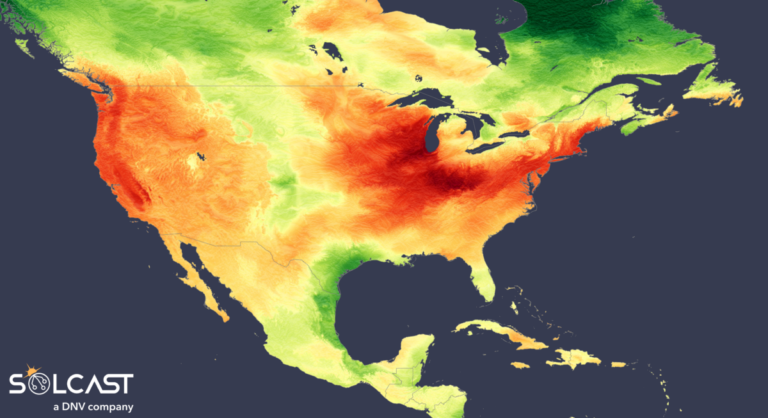In a new weekly update for PV -MagazineSolcast, a DNV company, reports that atmospheric conditions have led to variations in solar conditions in North America. According to analysis using the Solcast API, ISO New England and PJM performed better than long -term trends in capacity -related performance, while Ercot only performed slightly above average.
The atmospheric conditions of January led to variations in solar conditions in North America. High pressure abnormalities above the west coast and Rockies raised solar wins, but also raised magic fireworks risks. The Midwest also saw above -average irradiation, while Canada and the Gulf Coast saw falls due to raised cloud coverings. According to analysis using the Solcast APIISO New England and PJM surpassed long -term trends in capacity -related performance, while Ercot only performed slightly above average.
The West Coast and Rocky Mountains saw radiation levels up to 20% above the January average. A dominant high-pressure system above the North Pacific played a key role, so that storm systems keep offshore and dry, northern winds over a large part of the Western association
States. This pattern led to reduced cloud covering and suppressed rainfall, so that solar potential was considerably stimulated. However, these same conditions have also contributed to serious and destructive forest fires in California.
In the midwest, the radiation levels were well above average, with areas south of the big lakes that saw values up to 30% higher than a typical January. This increase was powered by a cold but relatively dry northern air mass that moved across the region. As a result, the air disappeared faster than normal after snowfall, allowing more sunlight to reach the ground.
This solar increase led to an increased production for American grids, where ISO New England reached 28.9%, while PJM saw an increase of 21.6%, both compared to the average values of January of 2007-2024. While January is usually a month with low irradiation, colder temperatures have helped to increase the efficiency of solar panels, so that the seasonal dip in solar generation was partially softened.
Further south experienced the Gulf coast almost average to sub -average irradiation, whereby the western part of the region is particularly affected. This was due to an increased convective cloud cover that reduced solar potential. As a result, Ercot only saw a marginal radiation benefit of 1.43% above average, because the weather patterns remained relatively stable compared to the dramatic shifts further north.
In the meantime, a large part of Canada saw under normal irradiation, which is already low at this time of the year due to the low position of the sun on the horizon. The combination of increased clouds and limited daylight hours resulted in one of the least favorable regions for generating solar energy in January.
Dissolved Produces these figures by following clouds and aerosols with a resolution of 1-2 km worldwide, with the help of satellite data and own Ai/ml -algorithms. This data is used to stimulate radiation models, so Solcast is able to calculate the radiation at high resolution, with a typical distortion of less than 2%, and also cloud-tracking predictions. This data is used by more than 300 companies that manage more than 150 GW of solar assets worldwide.
The views and opinions expressed in this article are the author, and do not necessarily reflect it by PV -Magazine.
This content is protected by copyright and may not be reused. If you want to work with us and reuse part of our content, please contact: editors@pv-magazine.com.
Popular content





